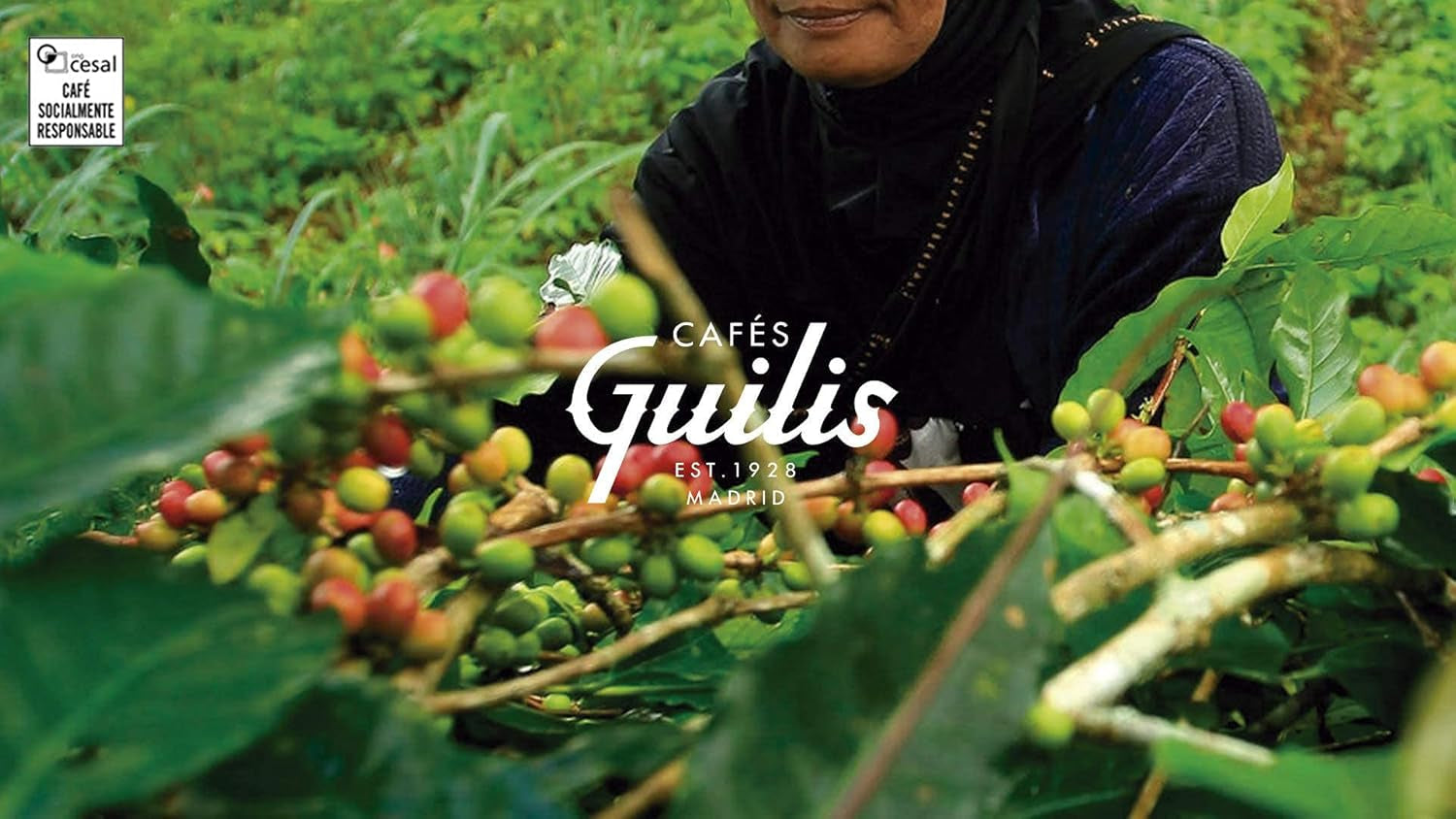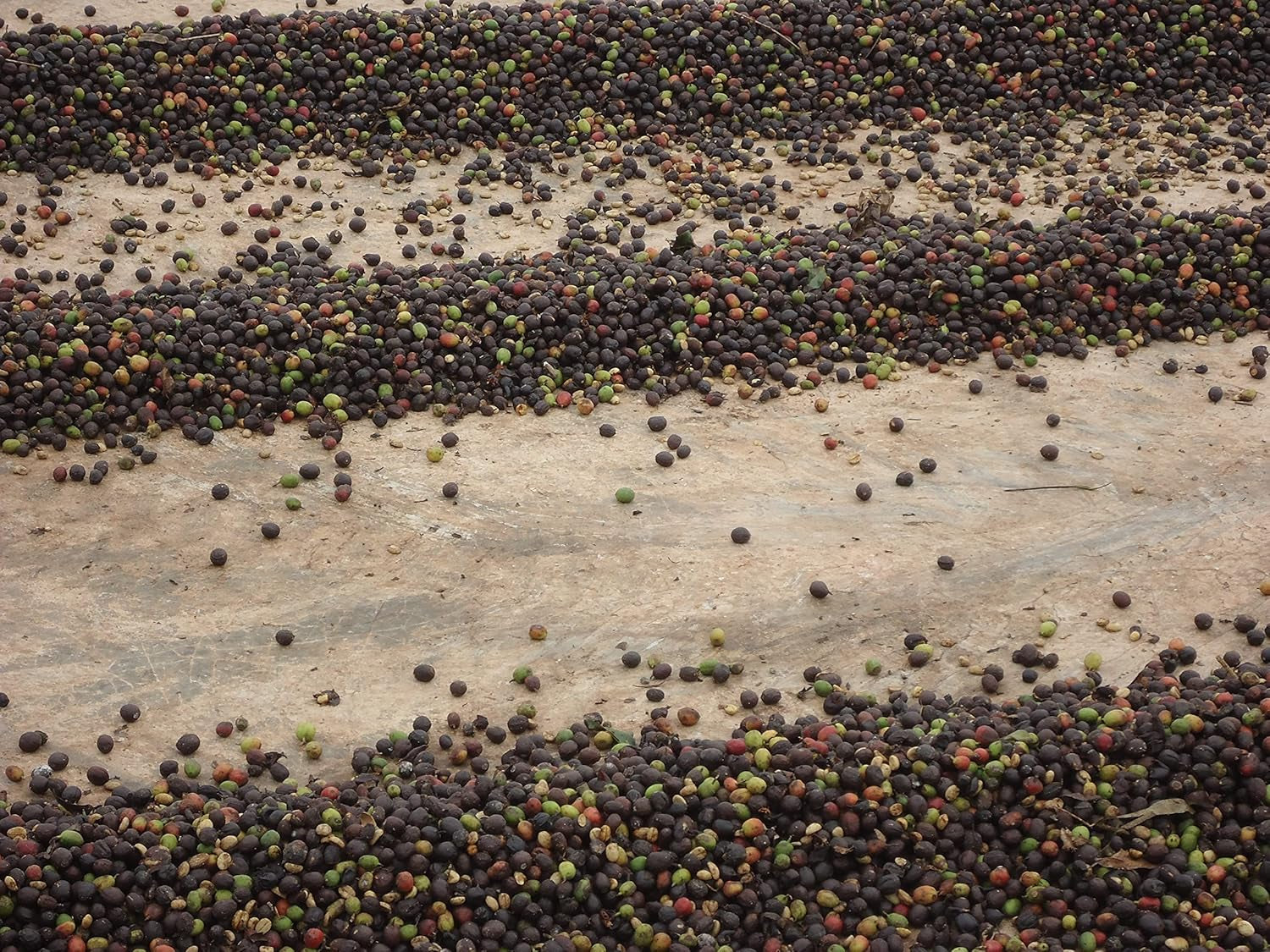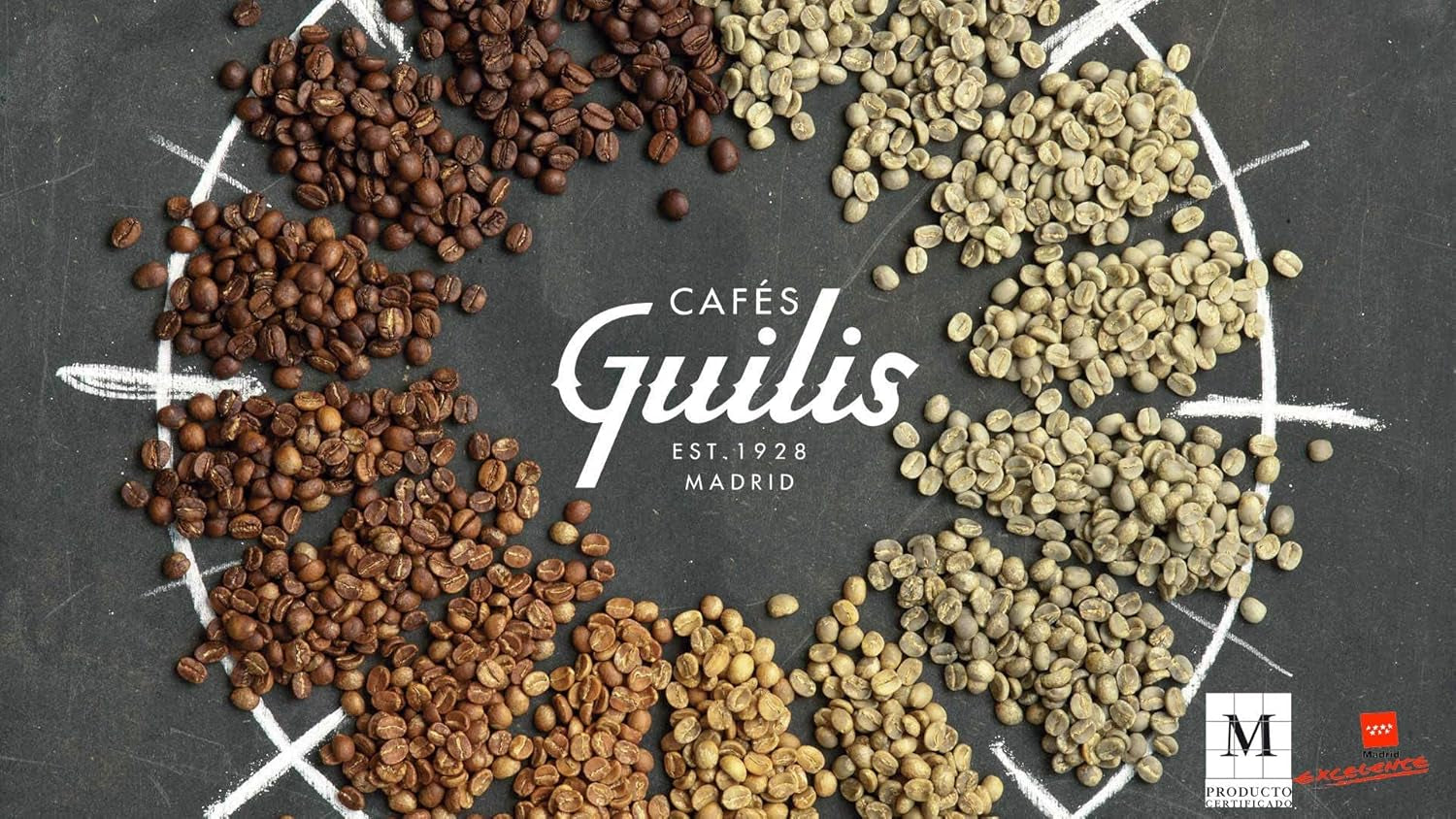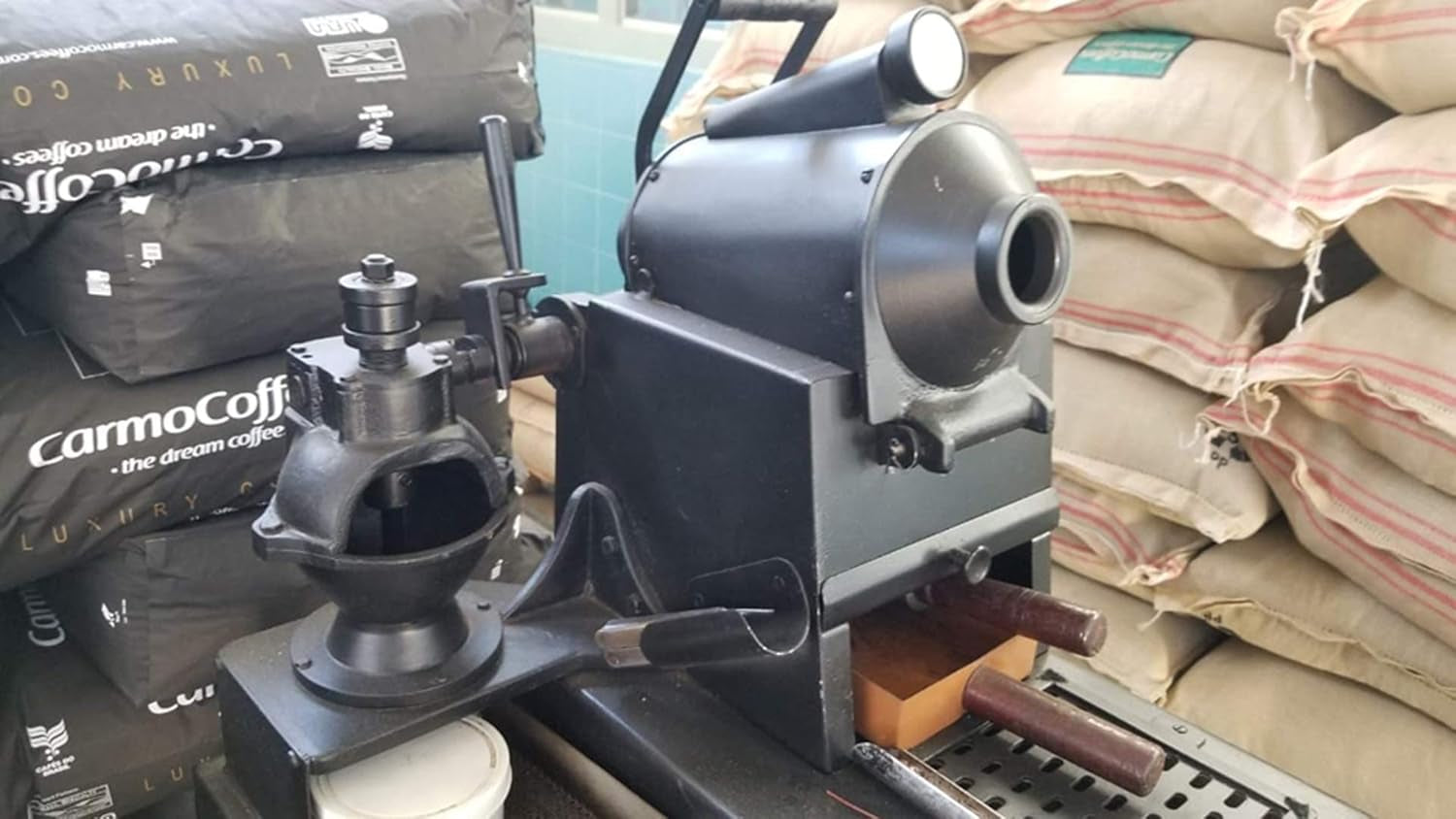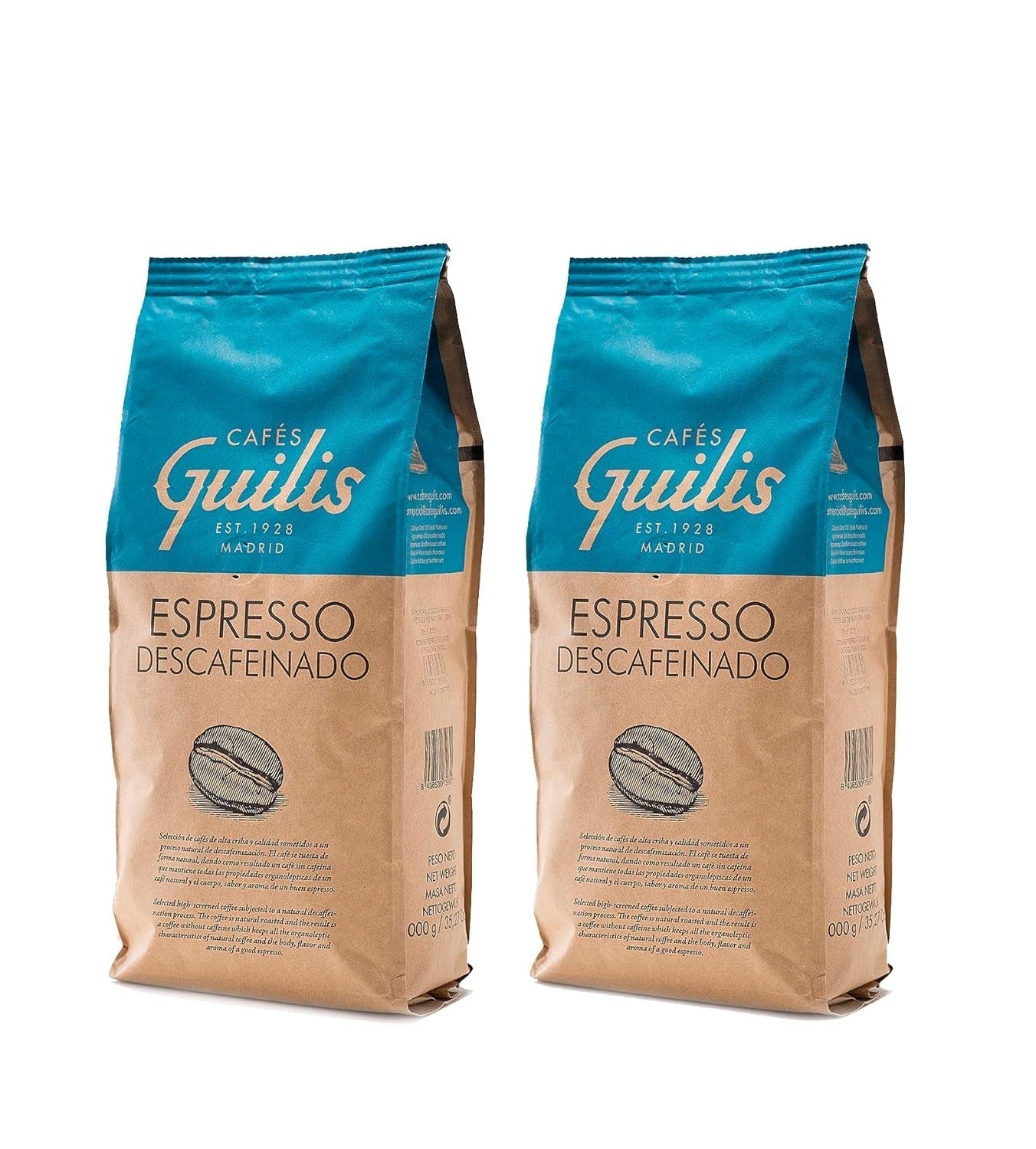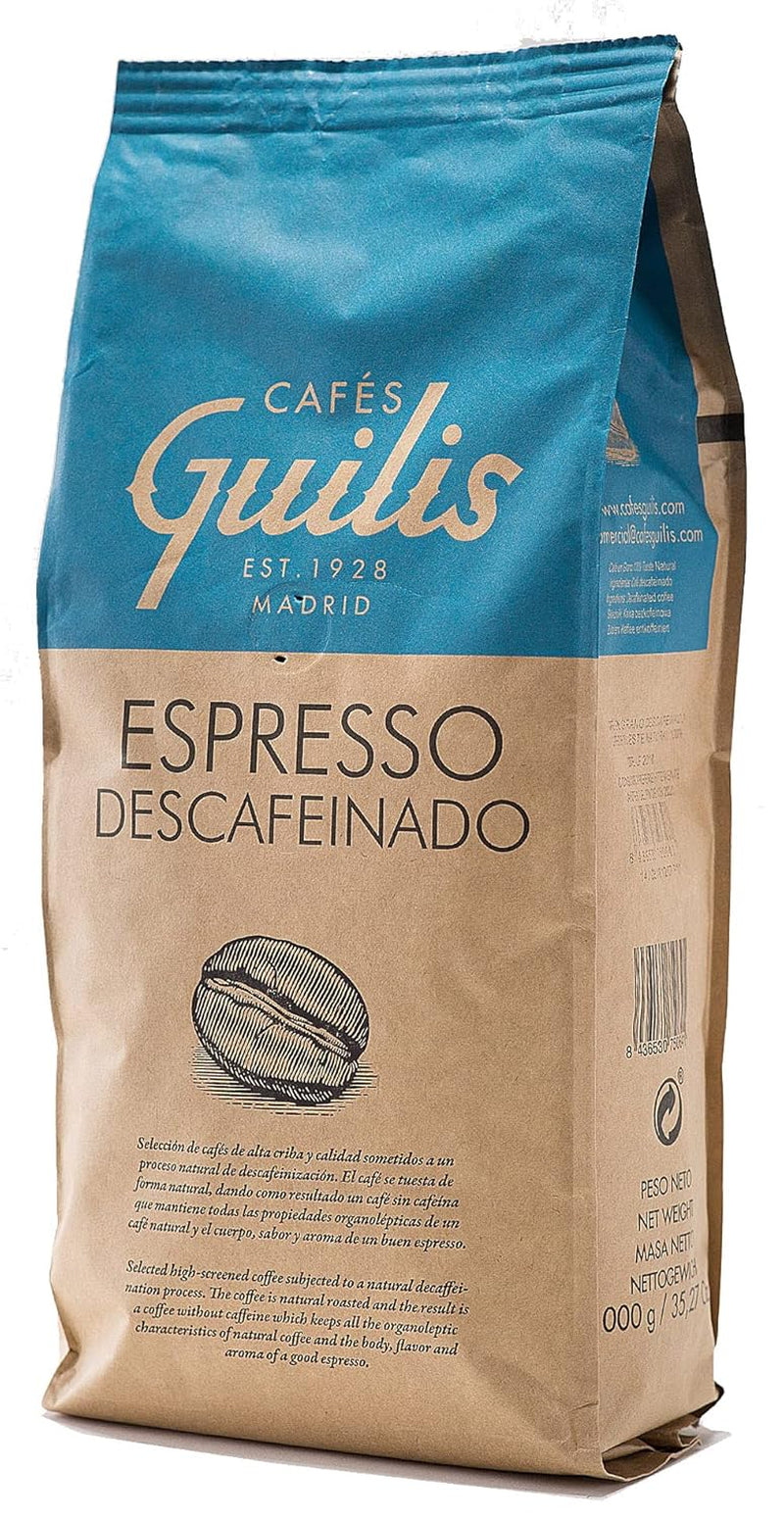
CAFES GUILIS SINCE 1928 AMANTES DEL CAFÉ - Decaffeinated Arabica coffee beans 1 Kg
This product is brought only on a firm order basis, exclusively at the customer's request.
Delivery is made in 10 to 20 working days, depending on the level of crowding and the legal holidays of that period.
According to GEO 34/2014, art. 16 lit. c, the product cannot be returned, as it is not normally stocked and is brought especially for you.
Please order only if you agree to these terms.
- Selection of 100% Arabica coffee, finely flavored, of high quality and subjected to a natural decaffeination process
- Decaffeinated coffee that retains all the organoleptic properties of a natural coffee
- Natural roasted coffee of natural origin, very fine, pure body, very sweet taste and good espresso aroma
- BENEFITS: Socially responsible coffee supported by rural social projects at the source. Coffee without chemical elements
- SUITABLE FOR ALL COFFEE MAKERS: preparation depending on the grind: espresso = fine; filter = average; italian mocha = medium; piston = thick Ideal for hospitality in cafes
Product information
Cafes Guilis was founded in Madrid in 1928 and has been roasting coffee ever since. It is a dynamic company that has its origins in a continuous process of innovation that has allowed it to position itself as a leader in the hospitality sector in the Spanish Community of Madrid and to open its market to other countries in Europe and the USA. The company follows the continuous evolution of the coffee sector in order to offer its customers a high quality product and the best services. It has an ongoing program of investment to improve its facilities and train its employees and implements the European IFS standard for food safety.
This decaffeinated espresso contains a selection of high-quality coffee beans that have undergone a natural decaffeination process. The coffee is roasted in a natural way, resulting in a decaffeinated coffee that retains all the organoleptic properties of a natural coffee and the body, aroma and very mild taste of a good espresso.
The decaffeination process
Basics: It has higher production costs because decaffeination is a labor intensive process. A coffee is considered decaffeinated when about 97% of the caffeine has been removed. Caffeine is not 100% eliminated.
When does the caffeine elimination process occur?
It is produced in the country of production before being exported for coffee roasting.
The decaffeination process
How to get rid of caffeine?
Wet green coffee beans are soaked in water for several hours. Thanks to the physical phenomenon of osmosis, the beans are decaffeinated and then dried with hot air. Caffeine is released into the liquid. The coffee beans are soaked in hot water and the liquid is filtered through a charcoal cloth.
Brazilian coffee plantation
Organic Brazilian Plantation. Coffee is planted in the shade of trees to preserve moisture and quality.
Coffee beans can be ripened and harvested by hand to maximize their properties.
Brazilian coffee plantation
The shade of the trees creates higher humidity, which reaches a higher range when the coffee cherries are picked.
The roasting process
Roasters increase the temperature as the coffee moves inwards. Heat changes coffee up: When it reaches 100 degrees, the beans start to brown; at 180 degrees, it emits intense aromas and acquires a caramel color; at 215 degrees, it turns brown. The beans must be chilled to fix the flavors and prevent loss of oils.
Cherry coffee
From the best sources, a rigorous selection is made of each harvest to offer the best product: a 100% Arabica coffee, given by a fine and aromatic coffee that is a delicacy of great finesse; or a robust coffee, a stronger coffee with an acidity and therefore more resistant and optimal for a certain type of blend.
Selected coffee beans
Our coffee is planted in the shade of taller trees, which provide the humidity necessary to obtain high quality coffee. This process helps to improve the soil.
The roasting process
During roasting, the green coffee bean almost doubles in size and changes color and density. As the bean absorbs heat, the color changes to yellow, then light brown, and finally a dark, oily color.
The roasting process can take anywhere from 7 to 30 minutes, depending on the type of roaster. During the process, temperatures reach 193°C for a light roast, almost 200°C for a medium roast and almost 218°C for a dark roast.
The roasting process
During roasting, the green coffee bean almost doubles in size and changes color and density. As the bean absorbs heat, the color changes to yellow, then light brown, and finally a dark, oily color.
The roasting process can take anywhere from 7 to 30 minutes, depending on the type of roaster. During the process, temperatures reached 193°C for a light roast, almost 200°C for a medium roast and almost 218°C for a dark roast.
This product is marketed by Naty Shop LTD (UK)
For products marked as international, the sales contract is concluded with Naty Shop LTD (UK), Company No. 16372563. Check the official registration on Companies House: Company Profile.
- Seller: Naty Shop LTD (UK). Billing data and service policies belong to Naty Shop LTD for this product.
- Currency & Taxes: The final price, the billing currency and any extra-EU customs/VAT are displayed in the checkout, depending on the country of delivery.
- International delivery: The estimated term is indicated on the checkout page and/or in the order confirmation.
- Return & guarantee: Consumer legislation and Naty Shop LTD policies apply for international products; the return instructions are communicated in the confirmation/order e-mail.
- Customer support: For questions about this international product, write to us at contact@naticake.com.

